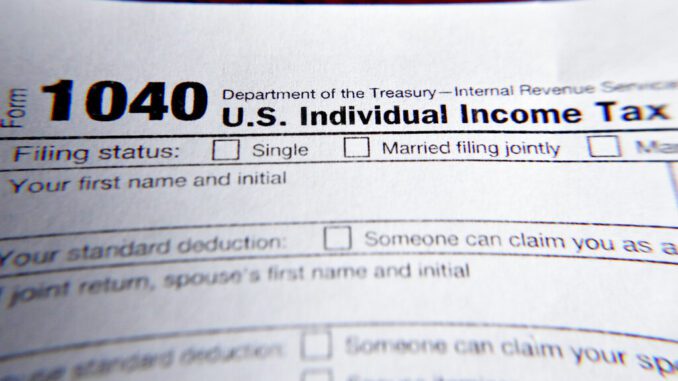
Taxes are complex, and for small-business owners, freelancers and people with side gigs, they’re even more complex — especially now, as filers reckon with the tax effects of small-business relief programs and rule changes.
But those new twists and turns can create some tax-saving opportunities, according to three tax pros. Here are seven things they say entrepreneurs and independent workers can do to lower their tax bills and their anxiety this filing season and in the year ahead.
1. DON’T SWEAT THAT PPP MONEY
If your business received a loan through the Paycheck Protection Program, or PPP, and you qualified for forgiveness, the IRS generally doesn’t consider the money part of your gross income. In addition, on your federal tax return, it’s usually OK to deduct the business expenses that you paid with the loan money.
“The IRS has been clear,” says Meredith Tucker, who leads the Entrepreneurial Services Group at accounting firm Kaufman Rossin in Fort Lauderdale, Florida.
State-level tax rules may have a different stance on PPP taxability, however, so be sure to consult with a qualified tax pro.
2. EAT UP
For 2021 and 2022, the business meals deduction is up from 50% to 100% if the food and beverages are from a restaurant .”That can include takeout and delivery. It doesn’t have to be eaten on the premises,” says Mark Luscombe, who is a federal tax analyst for Wolters Kluwer Tax & Accounting.
But make sure you’re getting your business meals from a restaurant. “You can’t get a deli tray from a grocery store and have it qualify,” he adds.
3. WATCH THAT ODOMETER
If you’re self-employed, you can get a tax deduction for every mile you drive for business purposes. In 2021, the rate was 56 cents per mile, and in 2022, the rate rose to 58.5 cents per mile. That means a 20-mile trip to meet a client might score a deduction of about $12 this tax year.
But don’t guess here; the IRS may ask you to substantiate your mileage. “The important thing, especially if you don’t have an exclusive vehicle used just for businesses, is to keep a log,” Luscombe says.
4. CAPITALIZE ON SPECIAL RETIREMENT OPTIONS
There are special tax breaks for retirement savings if you work for yourself. Solo 401(k)s, also called one-participant 401(k)s , are one example of IRS-blessed retirement accounts designed for self-employed people. They mimic many of the features of an employer-sponsored 401(k), including being able to sock money away pretax.
SEP IRAs are another option, and you have more time to contribute — especially if you get a tax extension, Tucker says. “You can take the deduction on your 2021 taxes and not actually have to fund the retirement account until the extended due date of the return, which could be in September, October,” she says.
5. LOOK AT WHAT’S SITTING IN YOUR HOME OFFICE
The home office deduction is a popular way to get a tax break on rent, utilities and other house-related expenses , but a home office can produce other tax breaks, too. If you commandeered an old table, computer or chair in 2021 for your home office and you haven’t already claimed it as a business expense, you may be able to deduct its current market value, says Sean DiMercurio, a certified public accountant at DiMercurio Advisors in Orlando, Florida.
For example, if you bought a laptop for $3,000 two years ago and now it’s worth $1,250, you may be able to claim a $1,250 deduction if you started using that laptop for your business this year, he says. “This is something that is often missed by this group of taxpayers and is completely allowed,” DiMercurio says. Be sure you have the receipts or proof of the original purchase, he adds.
6. GET READY NOW FOR NEW PAPERWORK IN 2022
Self-employed people already get a Form 1099-NEC from clients who pay them at least $600 a year, but if those clients are using Venmo, PayPal or similar payment platform to send the money, another tax form may start showing up for 2022.
“They’re going to get a 1099-NEC from the person they did independent contractor work for , and then from the payment processor — if it was paid by credit card or some electronic means — they’re also going to get a 1099-K for the same transaction ,” Luscombe says.
That means small-business owners will need to be extra organized in 2022. “It’s going to be a lot more paper and sorting out — making sure you’re not double-reporting income, too,” he says.
7. BE SERIOUS ABOUT BOOKKEEPING
“If you’re eating, sleeping, drinking or thinking about your business, chances are what you’re doing is tax-deductible,” DiMercurio says. Even a few cups of coffee can be tax-deductible under the right circumstances, and it can add up to big money in tax savings, he says.
But be sure to keep receipts and use accounting software so you have good records. Also, don’t stretch the truth. Tax evasion is a felony. “If you can’t make the argument for a deduction or a credit without laughing … chances are it’s not really a good one,” Tucker says.



